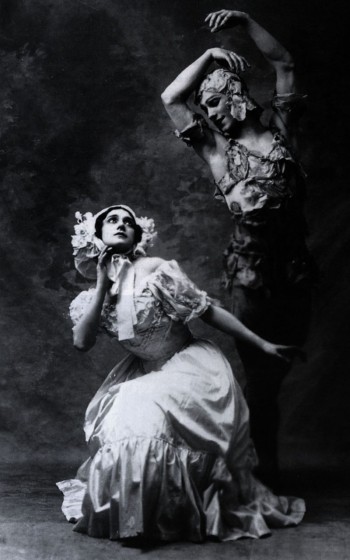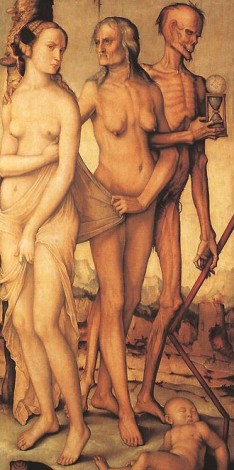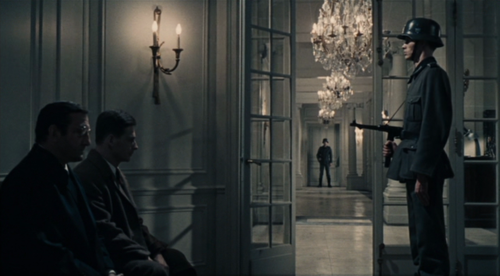
“Humility is truth.”
Saint Theresa of Avila
Over at the very interesting and worthy blog, BLDGBLOG, we have this recent posting…
http://bldgblog.blogspot.no/2013/05/in-box-tour-through-simulated.html
(and photos courtesy of Venue …where their piece originally appeared….http://v-e-n-u-e.com/In-the-Box-A-Tour-Through-the-Simulated-Battlefields-of-the-U-S-Army
I lived for a year or so up in Yucca Valley, next to Joshua Tree and several miles down wind from the 29 Palms Military Base and test range. They had several model cities there, at one time, and many locals had secured employment playing “Muslims” in simulated combat. The irony, if that’s what it is, is that the architecture of these model cities resembles rather closely the neo-dingbat cartoon “Arabia” of Indio and the old Riverside County Date Festival fairgrounds some twenty miles away.


Fort Irwin, US Army National Training Center, Mojave Desert, CA.
In a sense, the reductive cartoon ‘Muslim world’ created at Ft. Irwin, reflects the reductive cartoon world view of the Pentagon altogether. Here is another shot.. (pics courtesy of BLDGBLOG)…

Ft. Irwin

Date Festival fairgrounds
That one becomes inured to the constant assault of hyper-branding, to the endless noise and image of daily life in urban centers, also means it can be difficult to engage with image or narrative in any kind of substantive way.
I wrote last posting about the liberal cinema of adjustment (Redford et al). It was, in one way, a throw back to ideas of moral instruction in art. The left has always suffered this delusion, that art must be somehow a lesson. As if artworks were like children’s books. The Bernstein Bears visit Abu Ghraib. What lurked beneath this sort of filmmaking (if we restrict this discussion to film for a moment) was an idea of society, of a people, that could be spoken of as one.
“Instantaneousness is replacing actuality. In ancient societies, there were two kinds of history: general history – the grand narrative – and the history of events which changed the world. Today, we are living in a period of accidental history, of instantaneousness, and, therefore, of emotion. Opinion no longer exists in real time; there is only emotion. The TV images of the collapse of the Twin Towers and of the tsunami invoke emotion, not opinion. Our lives are conditioned by the shock produced by speed. We are confronted by the dictatorship of emotion, of the synchronisation of affects at the global level.”
Paulo Virno
Now, Virno drew upon Spinoza for this idea of ‘the multitude’ — which was juxtaposed to society. A multitude is the coming together without a unifying identity. One can argue this definition, and I probably do, but the germane point for right now is that in the post modern or post-Fordist society the worker is being appropriated more completely than if one uses just labor power ( the ability to produce) — it is his (per Marx) general intellect, his entire being, even his attention. It is a twenty four hour a day process, the colonizing of dreams and ambition and emotions and in a sense, our personal history. This is the service economy, the attention economy, the performative labor economy — however it is dissected, the thrust of the critique is meant to drive home the truth of the fascist goal of an appropriation of all human time and human activity.

Julian Reid, in an excellent article titled “A People of Seers”; (from a very good collection of essays Deleuze and Fascism, edited by Reid and Brad Evans), following Deleuze, divides cinema (broadly) as classical and modern. Roughly speaking, the modern begins after WW2. The classical cinema might correspond to a cinema which posits the people, not the multitude, and an organic narrative that is oriented to the people as an actual reality.
Reid writes:
“As he argues, the crisis in cinema precipitated a shift from ‘true’ to
‘false narration,’reflecting a more fundamental collapse in faith in the powers
of typification on which the ideal of the nation-state, especially, had historically
drawn and which came to grief, quite literally and on a massive scale, in the killing
factories of Auschwitz and Buchenwald. The Holocaust exposed the violence which a typified people, mystified to the point of assurance in its own coherence, could do to whoever does not meet the criteria of its essential type. It was as if amid the destructions of the war, and following the acute exposure of the necessary links between the myth of das Volk and the exterminatory violence of the Holocaust, cinema could no longer believe in the myth of a true narration through which the temporality of a people or its individual characters could be synchronized. Thus a new form of ‘false’rather than ‘true’ narration became more influential and a properly ‘modern cinema’ emerged. In place of chronological time cinema became characterized by a ‘chronic non-chronological time’(Deleuze 1989)”
This is an interesting perspective, even if I’m not quite buying it (a quick look at the films of Dreyer for example, might contradict this somewhat). What did happen, however, to be sure, was that a number of seminal German Jewish directors fled Germany to the United States, and found work in Hollywood. What they brought with them was a deep distrust of authority, of the state, and an internalization of Freudian psychoanlytic paranoia. The enemy was within, but it was within because of what was with-out.
Reid again:
“For the promise of modern cinema is that it enables us to confront
the world as it really is rather than seeing it as we might want it to be. Doing
so requires that it shifts our attention from the problem of how to act to the
problem of how to see. Modern cinema is fundamentally ‘a cinema of the seer
and no longer the agent’ (ibid.: 126). It is concerned with characters who in
losing the power of action have gained a more worldly power of (in)sight.
Characters for whom the disciplinary organization of the senses necessary for
effective action has not simply broken down but has been displaced by an
intense power to see the hitherto unseen. Modern cinema shows us seers and
in doing so, Deleuze argues, underlines the political potential entailed in our
own ‘becoming visionary or seer’”.
There is a slight problem here, though. This is a Bergsonian reading of vision. And I’m not sure this isn’t becoming a somewhat un-dialectical critique. For one thing, it is also a failure to listen. And this leads directly to a conflating of form and content. Reid goes on to discuss Hitchcock’s Rear Window, but without examining what the camera ‘sees’. Sticking with film, here, the narrative is presented via the vision of the director who is pointing the camera, staging the movement of actors, and editing the action. The poetics of film reside in how and what we ‘see’, not what the character’s see.

Reid again:
“The power that Badiou identifies with theater is superficially similar to that
which Deleuze accords to cinema: the power to make seen the otherwise unseen.
Theater, when it functions well, deploys the power of seeing in its identification of those invisible parts of a people that a given regime of power would rather went unseen, but the process by which it makes seen the unseen is that
of‘typification.’Typification proceeds by eliminating doubt as to the vagueness
of the subjective categories that compose a hitherto invisible people in production of some kind of ‘essential type’.”
This is not just wrong of Badiou, but wrong in a very reactionary way. It is suggestive of the need for one dimensional character, and worse, for a fidelity to a fixed idea of the real.
And Reid understands this…
“There are severe problems with Badiou’s account of the politics of aesthetics which would have to be
addressed for us to think so. In essence Badiou’s argument rests upon a highly
elitist understanding of the relation between the arts, its subject matter, and
the audience or public”.

Karsavina & Nijinsky, Le Spectre de la Rose, 1911
Art does not foment revolution. It is not moral instruction, it is not political instruction. And Badiou here is simply a cruder version of what the terminally reactionary Zizek does with cinema, as well. Narrative awakens us to the unseen, as well as to the material conditions that are working constantly to blind and deafen the populace to the forces that manufacture deceit. Corporate kitsch, the culture industry, is there to put people to sleep (Horkheimer). Text — language — speaks itself (Benjamin), and mediates the tyranny of the subjective. If we discuss this in the context of Deleuzian models, there is still the demand that one not reductively build a one dimensional description of narrative and of image — for in both theatre and film, the emancipatory work is that which disunifies, not unifies. There is something totalitarian in Badiou’s entire premise. Art is not limited, again, to providing a narrow political insight. Essays do that. What Shakespeare and Beckett and Bernhard all share (and a dozen others) is an ability to make of daily experience something allegorical. And it does this through an almost alchemical fusion of image, text, sound, time and space. Here it becomes important to raise the subject of “space” in theatre (and by extension, in a different register, in film) in which that Dionysian negation of rationality liberates the viewer from the mediation of domination, of state oppression, and of othe individual’s own psychic self delusion. One cannot escape the very extreme questions of an ontological and spiritual nature in art. The space opened up on stage is both physical and allegorical — for it provides, at its best, a memory of that which we have forgotten, something of a guide through the logic of domination, our own Oedipul narrative, and through the forces of commodity fetishizing, and the relentless hammering away of a simplified revisionist history, of both society and of ourselves (so a Niall Ferguson is mirrored by over prescribing Ritalin and Zoloft). For at its heart, artworks demand we confront the idea of our own identity. And having to confront the question of identity, means confronting our own mortality. Deleuze’s notion of this shift in post war film has value, but it is only a partial description of cultural colonizing by a system of authoritarian domination. Art is always anarchic in this sense.
The classic film noirs made by those emigre directors remain acutely unsettling, and not because of what the protagonist says but because of what the camera says.

Paraphrasing Burroughs, ‘nothing is true’. That is what is true, nothing. But that IS a truth. There is a logic of paternal authority at work in Badiou, the priest class he posits as owners and arbiters of the true knowledge. It doesn’t even rise to the level of cheap totalitarian PR. Those invisible subjects are visible in ways other than appearing as characters mouthing platitudes of equality. The photo above here of Vaslav Nijinsky and Tamara Karsavina, with the Diaghilev Ballet Russe, circa 1911, is one of those images that conjurs up (for me anyway) something so otherworldly, so incapable of lucid commentary, that I want to believe it can serve as a reminder of how many ways the unseen is made corporeal. I recently had a cynical leftist describe Ozu as a petit bourgeois something — I forget — and I felt mostly just a sort of sadness. For it is a culture of reflex nastiness, of defensiveness. And what is lost is what Deleuze describes here, writing of Ozu…
“…the absence of plot; the action-image disappears in favor of the purely visual image of what a character is, and the sound image of what he says, completely banal nature and conversation constituting the essentials of the script (this is why the only things that count are the choice of actors according to their physical and moral appearance, and the establishment of any dialogue whatever, apparently without a precise subject-matter).”
There is this snarky new left which simply approaches culture in very cleanly demarcated categories — driven mostly by a nostalgia they deny exists, and which is, by virtue of this, the more laden with deep resentment and anger. It is the post modern expulsion committee. Expelling a new member of their clique and thereby cutting membership in half.
Reid touches on Mishima later, and Schrader’s strange bio pic of the Japanese novelist and playwright. Again, though, it is somehow a confusion to speak of Mishima’s characters as if they were somehow separate from Mishima. What ‘they’ saw, or didn’t, was what Mishima saw, and didn’t. And few better examples exist of a writer who contradicted in his form the overtly fascist message of his professed beliefs. For Mishima’s sensibility, which is expressed through his work, is certainly more radical then his damaged personal vision of himself. His physical frailty, fought against in some werid incantatory Samaurai masochism, his sexual guilt, his distorted drive to annihilation. This is the first of many large holes in the Badiou model of the arts. I think it is important, though, to understand that film and theatre can embody the political, sometimes quite directly, but even then, it is only through the radical form of the narrative that a negation of the status quo takes place, and thus that these expressions possess any resonance. Jean Pierre Melville’s masterpiece Army of Shadows (1969) is on the face of it, an anti-fascist film. Melville intended it as such. Yet the film’s genius is in the exquisite capturing of the ineffable state of suffering endured under state oppression.

Army of Shadows, 1969, Dr. Jean Pierre Melville
Reid adds :
“In any case it is questionable whether the comparative framework that
Deleuze brings to bear on post-war cinema is sustainable. The distinctions he
draws between European, American and non-Western genres of cinema are
exercises in the creation of a series of what he himself called ‘badly analysed
composites’ (Deleuze 1991), failing as they do to apprehend the rhizomatic development of post-war cinema, especially its motifs of the intolerable and its character of the seer. There is an only insufficient attempt in Deleuze’s analysis to think about the ways in which concepts such as the intolerable were developed across the boundaries of national cinemas, between Western and non-Western worlds, and between cinema and other aesthetic regimes, such as literature, for example. The postwar production of this new typology of a people to come distinguished by its power to see the intolerable was itself a much more complex affair than Deleuze allows for, born out of a series of cross-fertilizations from Western to non-Western worlds and vice versa.”
The imprint of the colonial master on the storytelling of former colonial subjects is topic worth further discussion. There is only recently a technological boundary crossed that allows a lessening of the economic hegemony of cinematic creation; and Beller has touched on some of the new movements in the Philippines where video/film makers are carving out a non-White Eurocentric filmic narrative. Ones that frame their cultural validity outside the Enlightenment values of bourgeois identity and notions of social progress. What does “political” mean when a work is funded by Time Warner, for example, regardless of the *content*?
An ideological reading of the hyper branded cultural product one is inundated with today, is important in the sense that provides at least a part of the pre-conditions for being able to ‘hear’ and ‘see’ the work of art. Understanding form means having the capacity to read a Speilberg as, essentially, fascist. The institutional imprimatur of network and studio financing, and granted further legitimacy by an almost endless season of awards shows, and festivals, leaves its greasy toxic fingerprints on everything produced from within that system. This was perhaps much less so forty years ago, sixty years ago, but as media consolidation intensified, so have the style codes of corporate (and Pentagon approved) product further tightened. Network TV, even the prestige product so embraced by the haute bourgeoisie of the media empire and its consumerist prodigy (examples such as Breaking Bad, or the Aaron Sorkin Democratic love fests of white male pride are useful topics for deconstruction) exist as paeans to white privilege, and capitalist virtue.
If Reid sites, rightly I think, the significance of Scorsese’s Taxi Driver, it is important to examine the trajectory Scorsese followed in the thirty years since. Hardly the oeuvre of a radical voice. Interestingly, the script by Paul Schrader, was cribbed liberally from the diaries of Arthur Bremer (now rather hard to find). Those diaries make fascinating reading today, coupled to the knowledge one has gleaned of CIA and FBI activities vis a vis the Kennedy assasinations, MLK, as well as COINTELPRO.

Minority Report, 2002, Dr. Steven Speilberg
One can be as guilty as Badiou in the opposite direction, to mystify the engagement with art as requiring simply an education in aesthetics. The constant circulation of branded image, of kitsch narrative, contributes to an endless shifting of perspectives, which art must counter with a re-creation of the vectors that direct a way out of the ever shrinking enclosure of state controlled image and message. Form provides a focus on the shifiting, a map to the slight of hand that is corporate cultural manipulation. That roadmap to the psychic ‘outside’, as it were, remains illegible but its probably one that we need to keep reading anyway.
The grotesque cartoon-like training at Fort Irwin, with their Muslim city in the Mojave Desert, is suggestive of the coarse and sort of boorish personality of post modern fascism. Speilberg’s embrace of a rationalized totalitarian state (in Minority Report, most clearly) is the fantasy of an elite manufacturer of propaganda. The truth of this rising fascism, on a daily basis, is closer to the infantalized male comic book of Muslim Town, out near Barstow.


Love this, John, and agree with much of your critique. During your discussion of didacticism in the arts I thought of Brecht, who’s so interesting in how his early work so completely embodies the very opposite of his later didacticism. Am thinking of In the Jungle of Cities in particular, which is my favorite of Brecht’s plays and a deliriously Rimbaudian piece of theater too. The tension between this side of Brecht and his rationalist impulses runs through all his work, even the Lehrstuck and the late plays, I’d argue, and it’s what spills over into Heiner Mueller and is part of what salvages Brecht from his more reductive tendencies. Brecht was also a part of that wave of emigres you mention, as was Peter Lorre, who in Berlin had originated the role of Galy Gay and then became the archetypal European decadent for Hollywood in the “golden era.” Lorre’s machinic performance in Man is a Man was apparently remarkable, and Brecht’s work as a director also brings something transformative and even shocking to the table. Here again though I’m not sure if the uncanniness he achieved with Lorre and then later with the Berliner Ensemble is what he was after, or what he theorized about in a didactic mode. A slippery one, no question, Herr Brecht.
Deleuze’s account of the shift from Movement Image to Time Image is chilling given how forcefully we’ve been thrown back into the Movement Image since the Lucas/Speilberg counter-revolution. The Wall Street blockbuster is a demonstration of affective manipulation at its most potent – “not everyone has a frontal cortex, but everyone has a brain stem” would be the motto. Looking back over the history of art you can see analogous shifts in which a dominant mode of expression – Renaissance frescoes, for example – reach their peak and then begin to develop mannerist tendencies. I’m not sure I’m correct about this, but in hindsight the energy and clarity of cinema in the 1960 and 1970s with its pantheon of major league artists across the globe is obviously linked to the neoliberal resurgence of the 1980s and its aesthetic correlate – the American blockbuster. What’s intriguing to me is how the death of cinema as a viable popular medium walks hand in hand with this “Empire Strikes Back” moment, the 1960s being the era when TV fully replaced cinema as the popular media. This seems analogous to how canvas paintings – readily commodifiable – began to replace the fresco just as the Mannerist painters (think of Pontormo) began producing their haunting and elusive images. My point is that there is something very challenging for the human constitution to embrace in what Deleuze describes as the Time Image, and culture regularly flinches when it comes near.
Fascinating article, a per usual. This bit stood out for me:
“That one becomes inured to the constant assault of hyper-branding, to the endless noise and image of daily life in urban centers, also means it can be difficult to engage with image or narrative in any kind of substantive way.”
Along with your analysis of the consistent erosion of meaning, of narrative, into the slippage of image-emotion, image-emotion; opinion-less, drifting – that doesn’t even describe it does it – the entire shibboleth of late 20th century film and film production that you carefully analyse is still with us as an edifice that defaces the real in the service of the ‘hyper-branding.’ This is especially true for a city-hermit like myself. I rarely leave London, and I live in Bloomsbury, which is considered ‘central London’ – despite the city not actually having any real centre. Anyways, here is a ‘media rich’ place and ‘media rich’ is the euphemism for branding obesity
again, lots to say
on e”Understanding form means having the capacity to read a Spielberg as, essentially, fascist”
I think he’s textbook liberalism and what we see in his stuff is the fascist code offered and repudiated but shown as a flavour of liberalism in crisis, or what liberalism becomes in certain conditions.
But but but…for me as you know I wonder if we are not clinging to something really obsolete, and in a way missing all the important things, by treating these kinds of culture commodities as discrete works, reading them as discrete, concerned with their varied forms. That’s a concern for our aesthetic pleasures but politically this stuff is inert piece by piece; it is a barrage, a flood, rarely consumed in these chunks divided by copyrights. I mean what does it mean to sayt this film on this channel is fascist and that one is liberal on that channel – i mean yes, you could have a fascist and a liberal talking direct into a camera, adviocating, it’s doesn’t help us understand how the fascist ideology is disseminated. If we concern ourselves with the contrast between the fascist lecture and the liberal one, we tend to ignore the fact that the actual subejctive experience is flipping between these things and consumig media which offer them both, which recognize us as charming, wronged and right to be angry and warn us of our nasty neighbors simultaneously, and the ideology is in this – not in the taste of the water but the fact that we drop a coin or whatever and it comes out of a machine with various flavours we choose. Getting fascism and liberalism from a machine of this sort is itself the ideologically effective social practice; even that we are prompted to be concerned with how good this or that two minutes of simulated lynchings or humiliations – how good the desensitzing barrage is, how this one is a little self conscious or whatever thrills us immoderately – is transfoming us as adults and citizens into these dependent spectators who feel reliant for all the world on the suppliers of these entertainments, sermons, whatever.
So my feeling is this all needs to be put together with what you were saying about theatre – the live stage – because there remains some possibility of not being absorbed into this overarching ideological training.
“The classic film noirs made by those emigre directors remain acutely unsettling, and not because of what the protagonist says but because of what the camera says.”
i mean even this is transformed now that the consumption of these products is not controlled as it once was by the conventions of cinematic screenings. Can the camera say in the same way through the laptop with several windows open, aqnd what happens to the subject receiving simultaneously the fascist and the antifascist communications?
Badiou is just so appalling, his Beckett stuff is like biblical exegesis. It’s so plain *stupid*. But do you remember his Theses on Art?
http://www.lacan.com/issue22.php
12. Non-imperial art must be as rigorous as a mathematical demonstration, as surprising as an ambush in the night, and as elevated as a star.
As if these demands were not crucial dogmas of of empire.
(real art is the readymade fountain, a gesture toward a conception valorizing consumption/taste and Alain Badiou’s status; it isn’t messy, haphazard and ordinary, like Mierle Ukeles’ maintenance that inspired)
Oh, now I have so much to answer. Ok….@guy: I want to get back in a little bit to talk about Brecht, because I agree and I want to say a couple things about Jungle of Cities specifically.
Let me go to Molly;
First I think yes, something IS obsolete….or perhaps not obsolete, but in need of clarification, and an adjustment somehow. I was thinking just today, before I read your comment, about how those 1940s noirs now are available on YouTube in forty six installments. And I thought, thats NOT the film Siodmak made. Its something else. But before I get into that, the question of how stuff is experienced….I remember at the film school, if you went over the student dorms, all six floors, you would see computer screens on at 3 in the morning in every single room. And students passed around copies of this or that….a whole season of some HBO series….or some odd pirated copy of a new film that hadnt been released yet… with half of it showing Thai subtitles, and the other half dubbed into Armenian. Or some with the Polish lektor. Now, yes, this was a film school. And these were very singular fanatics in a sense. And they were looking at certain things, often, (with good reason) for technical purposes. But that aside, there was an unmistakable sense that the ‘apparatus’ of presentation had qualitatively changed — there was some encroachment of exchange value, the audience was providing attention and time somehow and this stuff presented was linked to a large machine, a social machine that is totalitarian. Everyone was a rat hitting that *coke* lever for their fix….and hitting it ever more rapidly. But….I still think if one raises this question you raised, in the way you did….something of a totalitarian nature is being expressed as well in that question. Oh, its all an inert barrage. Well, its not, though. Not in every viewing, because sometimes I can sit alone up here in the forest with my laptop and watch a Bresson film and I have no problem experiencing ‘Bresson’. Im not experience a Cheetos commercial.
Now the thing is, this question also implies this moral purpose again….that its simply a simulacra of political discourse…..switch the channel and you get Jon Stewart and flip it again mid sentence and you get Tarkovsky and flip it again and you get the Super Bowl. Yes, right, that apparatus, that platform, is negating the work, it is negating the form, it is negating everything, expect perhaps the branding principles at work. And that is the logic of technology, I suspect. This is the revenge of technological democratizing….. its so inexpensive (relatively) that everyone has an iPhone or whatever and they watch this stuff……..there is an implicit promise in this…the promise of progress and a perfect future….and its actually the backdoor adjustment of this system. The logic of domination promises and betrays its promises. Thats the underlying truth of the culture industry, too. Technology seems by its very inherent developmental logic (and maybe not even by Capitalism) to negate real experience.
So we have this domination, this system in which we can shop for one of 400 kinds of toothbrush, and 350 brands of toothpaste and then shop for one of six godjillion movies and TV shows. Ive said before the sheer volume of stuff filmed has done something very distrubing and its so disturbing that nobody wants to look at it because in a sense, we cling to these small pleasures. That is not to say these small pleasures are not important though. That is where we differ slightly. But I am careful not to attach a purely political purpose to artworks. Or a moral one. But still, if we watch what Guy called the blockbuster (above) we are, in fact, within a intentionally deadening mimises…our mimetic internalized reading is intended to encourage some pavlovian obsessive compuslive re-creation of lack, or trauma…..(this is where I know I sound Lacanina….probably because i am) and this is a loop….there is no leaving it. Now I do agree, i totally do, and even if I dont want to in a sense, for personal reasons, I do agree that theatre is not doing this. Theatre is more resistant to these things because the technology is so comparitively basic– and I sense more and more in institutional theatre the forces that are destroying this very quality of stage space. (end part one)
part two:
So…..yes, it is increasingly easy to allow for the total destruction of what the camera said in the original film. Six tabs open, three voices going on ….yes, its gone….its been erased. Not everyone does this, of course. But there is a clear encouragement TO do so…..and this is partly the message of post modern pop aesthetics. The sampling and the *cool* (brand cool) allusions, inside jokes, references…..hip, cool, and this pastiche is trotted out there in this post gonzo journalism, and in eight billion blogs and its really a sort of mass contagion, and its what I think Burroughs really meant by word virus. Except he didnt grasp the nether reaches of technology fifty years down the road. And even if ‘camp’ and other strategies instinctively reacted to this, it hasnt stuck. — If there is something, embedded, though, of an allegorical nature in these technical advances…..if *networks* is now the allegory of post modern society, and autism its signature pathology, then there needs to be an adjustment to this mimetic paradigm shift somehow. Or, I mean, we are doomed to some weird incoherent network experience of hyper branding, and all of it encased in a hyper violence. I mean I dont think the extreme violence attached to all this is by accident. And its white male domination…..the violence has, usually, specific targets….young beautiful women mostly.
Speilberg, in my opinion IS a fascist by the way. He is simply. The liberalism is now a lip service to some Brand, some nostalgic brand that is being repackaged. But his narratives are fascist. Is it a “liberalism in crisis”? yeah, yeah, I think that’s right….repudiated, but also subsumed. The Speilbergian status quo is utterly authoritarian. War of the Worlds was the most authoritarian film of the last twenty years I think. But anyway, I want to believe still that a liberation occurs in our mimetic re-narrating of, say, Ozu …. which is complex, but i mention him because this is a Japanese language film, and its distanced in some way, and part of the genius of Ozu was to provide this space, a genuine filmic space, in which those orientalizing or commercially co-opting trends could be set aside…. for there is in Ozu this moral camera. And its amazing. Dryer is the same, from a more weirdly religious backdrop — but the very rigour he applies to an aesthetics of transcendentalism, is pretty marketing proof, still. Nonetheless, theatre, this immediate space that is alive with the danger of an eraced anticipation, with the shared anxieties of live performers, etc….this is not prey to the billion films a month that have been shot over the last forty years. There is no real technological reproduction of a play.
anyway, @Guy………..yeah, its funny in Brecht, how Jungle of Cities and Baal, too, so closely resemble Woyzek. And Kleist and that this poetic expressionistic sort of capture of the tragic, in the guise of the grotesque…as I think Kott had said….well, someone said…..is more interesting somehjow than a lot of the later work, but actually, the later work couldnt have existed without Baal. I mean the later more didactic work is an answer to the early work…its some weird Job’ian discourse he is having with himself. And i think you are right, and its a great observation, that the Lucas thing (and Speilberg) struck at just that moment. It does really feel that way.
@eilif…..”defacing”….yes, thats a perfect word. Thats right, I think. The defacing of the real……we cant even get to having a discussion about the real. I think thats the purpose in a sense of this hyper branding.
“Not in every viewing, because sometimes I can sit alone up here in the forest with my laptop and watch a Bresson film and I have no problem experiencing ‘Bresson’. Im not experience a Cheetos commercial.”
Rgfht – I accept this and say the same. I am just wondering what is the ideology working when we say this abnd know this – I am downloading The Go Between. I watched Draughtsman’s Contract again recently and bits of the new Star Trek. I am not trying to get at what our quality of experience with each of these individual commodities is. But what in addition is the ideological effect of having what we want this way. Anthropology is all up to speed on informing us about the effects of shopping for food in supermarkets and high end type delis, shopping generally, but there is still a defensiveness about entertainment commodities and how they’re delivered and organize us in the wired section of the world. Let’s assume your experience of the Bresson isn’t in any way diminished by the medium (it might be a little but perhaps not what you personally find most signficant and enriching); but isn’t there something else more general and really epochally significant than any single entertainment commodity that this involves? Because we do need to explain finally whyt we are all allowing this social order to reproduce itself, when it is odious to our feelings and against our interests. And this is not an individual question. Its answer doesn’t lie in the enriching experience of an individual before the Bresson but in the many individuals supplied by whatever we find enriching in this way. Something is going on when there are these strong correlations between political passivity and certain media environments. We can address the question of the content like you did in the violence post – the brutalization of our sensual surroundings (and I think the violence in the stuff that comments ironically or critically on the violence in other stuff contributes just the same) – but there is also an objective feature here, the way this organizes us, how we learn to get things from the spectacle. George W S Trow in his Within the Context of No Context talks about how we learn to love tv, this cold thing pretending to be warm, this cynical calculating machine pretending to be friend and lover…and we’ve talked about how people can have very strong feelings about this cold con that is electronic media entertainments. I mean were the Romans desensitized in their gladiator arenas in the same way we are by the simulacra of violence? Or was there a limit to how we are inured to real visions of real violence – and what does getting it as safe sanitary spectacle, known illusion, do further? Something, I suspect.
“The Speilbergian status quo is utterly authoritarian.”
Yeah it is curious. Like Schindler’s List is Clinton – and the message was neoliberal in that the Nazis were presented as the image of the bad taxing State, which is inimical to the natural justice and decency of capitalists. The Nazis were presented as the welfare state, the state in Reagan’s phantasms, kind of people with mishigas, resisting the natural flows of self interest, of private vices leading to public goods. But in another way the movie was in love with Nazi aesthetics. And it’s hero was the Nazi’s own idea of ideal man. (and that it turned out Schindler really was just a Nazi who didn’t save anybody was unsurprisign too).But there was something there like retreat from the edge of fascism, or at least the kind of extreme fascist antipeoplism of Mel Gibson, say, to this liberalism. I mean at least the movies acknowledge that human survival is the ultimate justification for anything. Authority has to show it serves the people somehow. It has to show its responsible – as a director he ingratiates himself with the audience by showing his consideration for them, how well he knows their needs and how generously he serves them. He’s not going to show us people being gassed to death in a locked underground cellar. His fitness to rule his fictional universe is seen to be dependent on this consideration, this “populism,” this supply of a supposed audience demand. (This is all a con of course, but I mean just what is being advanced and avowed).
“There is no real technological reproduction of a play.”
yeah and Authority such as it is in live theatre is produced and maintained before one’s eyes by a politics, (that we have to be consenting and participating in as audience) whereas in film it’s just given. The audience can’t revolt in a cinema.
these capcha (or whatever its called) math questions often make me pause…..thats so sad. Shouldnt have cut math class.
@molly…right. The theatre erases both anticipation, that rote expectation, AND it creates some sort of civic entity.
yeah the civic entity
this is what was abolished
cinema comes in right after the Paris Commune
long gone are the days when the gendarmerie turned their bayonets on the opera audience of nationalists at La Scala.
What I have noticed in Speilberg is …and War of the Worlds was the perfect example, is his love of authority figures, and of institutional authority — the military. Scenes of soldiers saying “move along now…” seemed to interrupt things like every forty fifth frame. It was bizarre., But all the way back to Jaws….to the prehistoric thing, and Minority Report….there is some anxiety in Speilberg himself I suspect, about authority. He just wants the police state to be ‘nice’. I mean thats what Redford wants to, really, and keep that fucking riff raff off my mountain while Im sking.
But yes…to answer all the above…yes yes. I do not understand why .,….as a banal example….that network TV can cancel shows mid season. I’m always surprised people are not angrier. Wait….you promised me this story and now you just stop it? I dont get to know the ending? But see, I think this is because of this built in acceptance of incompletion, and the audience is experiencing this stuff on the same level as the producers and executives and sponsors. They are actually MORE interested in the ratings, in how it fits into the thursday night 8pm slot opposite Falling Skies (more speilberg that….) then they are actually engaged in the narrative and this is because they have already seen the narrative about 4000 times. They are expert consumers of the Brand. Its shopping.